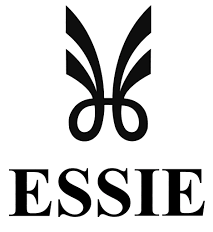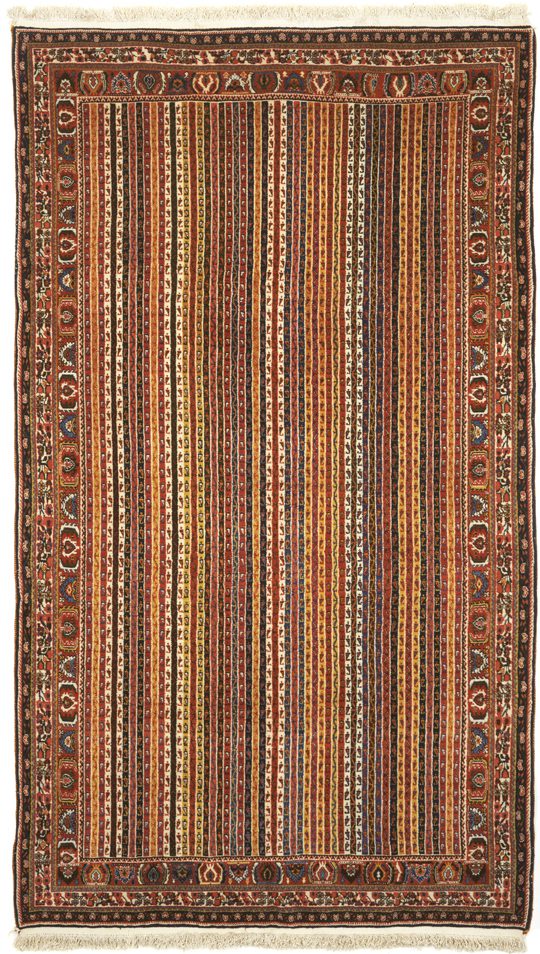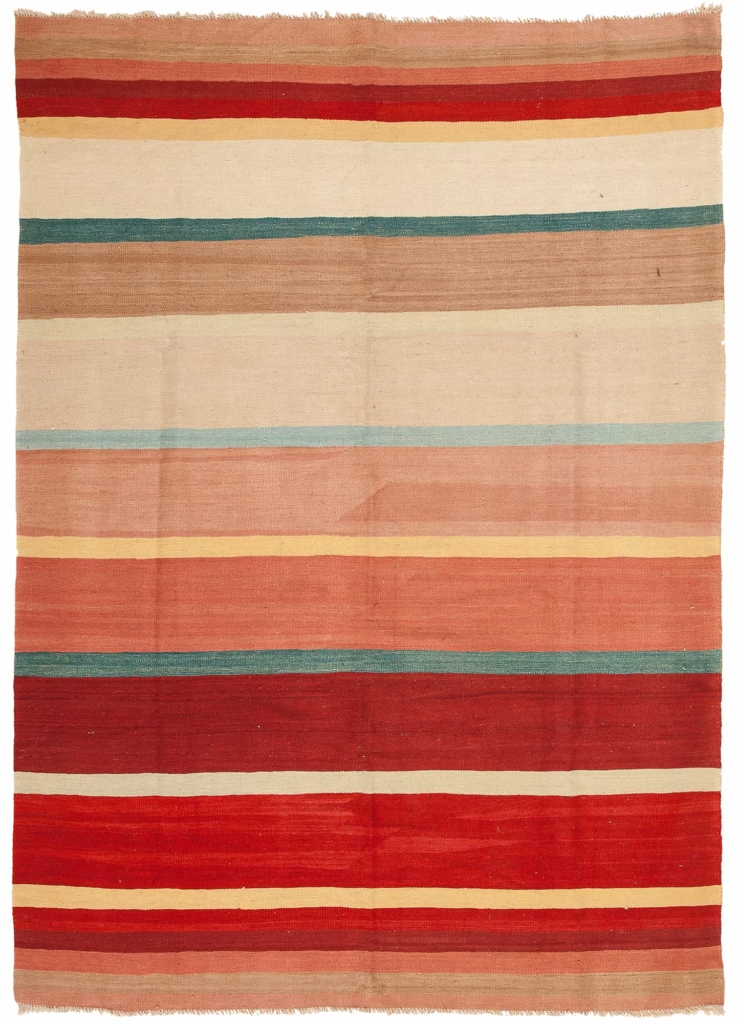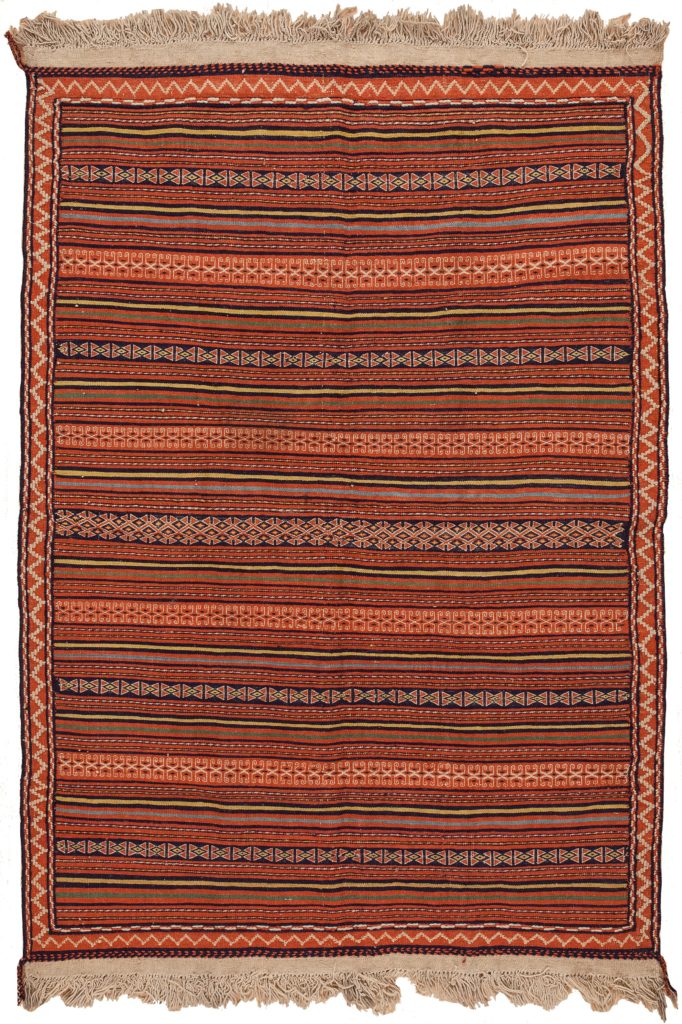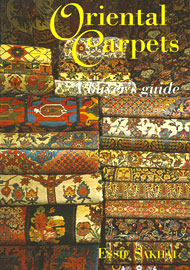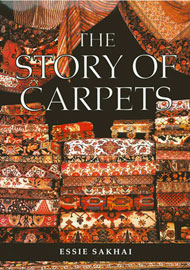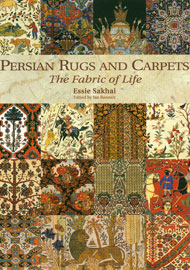Persian Qashqai Striped Rug – Moharamat
Rug #5206Persian Qashqai Striped Rug – Moharamat
Persian Qashqai striped rug handwoven in Iran from wool. This specific design is also referred to as Cane Moharamat and bears the Paisley (transliterated from Farsi as Boteh) motif.
The Persian tribal Qashqai group are a historically significant ‘confederacy’ which is made up of a group of once independent tribes inhabiting different areas within the south-west province of Fars. Fars was once the ancient kingdom of Pars, home to the important Persian royal city of Takht-i Jamshid and more familiarly known to us, from ancient Greek, as Persepolis; In turn, Persepolis, a ruin which is now a world heritage site and close to the marketing town of Shiraz. These independent tribes were formed into a confederacy in the 18th century by the then government to stop the tribes fighting and squabbling amongst themselves and enabling a single head to be identified and made responsible for maintaining the peace with the aim of collecting taxes and providing well trained equipped soldiers if needed for the greater good. Despite their formal recognition in the 18th century, the tribes had been inter-marrying and forming localised confederacies amongst themselves long before this official recognition, confirmed by the growing use of the Qashqai title from the 16th century onwards. The principal tribes that make up the Persian Qashqai confederacy and which are known as weavers of rugs and woven artefacts such as bags and animal trappings, are the Kashkuli, Amaleh, Darrehshuri, Shish Boluki and Sherkalu. These are known as the ‘taifeh’ or principal tribes which can in turn be broken down into ‘tireh’, or sub-tribes, namely the Bollu and Igde. Other tribal groups in the Fars area are the Lors and the Khamseh, and there are times when rug patterns, and motifs generally associated with one group can be cross fertilised and used by other groups of tribal weavers, which can occasionally muddy the waters in attribution. Inevitably in Persian Qashqai rugs, the styles of designs, the motifs, compositions and colours are shared amongst the entire group creating an accepted homogenous style. There are certain motifs and styles of representation that can be attributed to a taifeh, and even a tireh.
For further information please contact us and our team will be pleased to assist you. All pieces in the collection are under the auspices of Essie Sakhai, one of the world’s foremost experts and collectors of fine handmade Persian rugs and carpets.

Delivery
Delivery
Enjoy Complimentary Express Delivery at Checkout
Free express next-day delivery on all UK orders.
Free express delivery on all international orders above £2,000.
Estimated Delivery Times
Please allow between 1-3 days for UK, Europe and United States destinations and 5-7 days for Far East, South America, Middle East destinations.
Please note that orders placed after 12pm (UK time), on the weekend, or during holidays will be processed on the following business day. You will be provided with a shipping tracking number once your order has been shipped.
Collection from our Mayfair London showrooms
In-store collection will be ready within 1 business day. To collect in-store you will be required to show confirmation e-mail, official photo ID (passport or driving license) and the payment card used for the order. If someone else is collecting on your behalf, please make sure they bring a letter of authorisation that permits this person to collect on your behalf, official photo ID of the purchaser and of the person collecting and confirmation e-mail.

Exchanges
Exchanges
Essie Carpets offers clients a lifetime exchange service on any items purchased from us should you wish to change your carpets at any time in the future, subject to the item being in good condition; this can be particularly useful when redecorating your home, or when an upgrade in type or quality is desired.

Payment
Payment
Payments are accepted via credit card or debit card with a valid billing and shipping address*. Accepted credit cards are Visa, American Express, and Mastercard. When placing an order, your billing address must correspond to the address of your credit card, or we will not be able to process your order.
Bank Transfers are also accepted; in order to pay by Bank Transfer, please contact our Client Services via telephone at +44 20 7493 7766 or e-mail at sales@essiecarpets.com.
All transactions are secured. The Essie Carpets website is provided with an SSL encryption system to protect personal and payment data.
Similar Carpets
-
 Persian Qashqai Missoni Rug 200 x 150 cm
Persian Qashqai Missoni Rug 200 x 150 cmRug #171 Persian Qashqai Missoni Rug
£5,500.00
Persian Qashqai Missoni Rug
-
 Fine Rare Qashqai Persian Runner 450 x 105 cm
Fine Rare Qashqai Persian Runner 450 x 105 cmRug #2085 Fine Rare Qashqai Persian Runner POA
Fine Rare Qashqai Persian Runner
-
 Persian Qashqai Kilim 246 x 176 cm
Persian Qashqai Kilim 246 x 176 cmRug #1703 Persian Qashqai Kilim
£1,900.00
Persian Qashqai Kilim
-
 Persian Qashqai Kilim 165 x 115 cm
Persian Qashqai Kilim 165 x 115 cmRug #1379 Persian Qashqai Kilim
£1,600.00
Persian Qashqai Kilim
-
 Persian Qashqai Missoni Runner 570 x 68 cm
Persian Qashqai Missoni Runner 570 x 68 cmRug #1352 Persian Qashqai Missoni Runner POA
Persian Qashqai Missoni Runner
-
 Antique Persian Qashqai Runner 383 x 107 cm
Antique Persian Qashqai Runner 383 x 107 cmRug #1154 Antique Persian Qashqai Runner POA
Antique Persian Qashqai Runner
